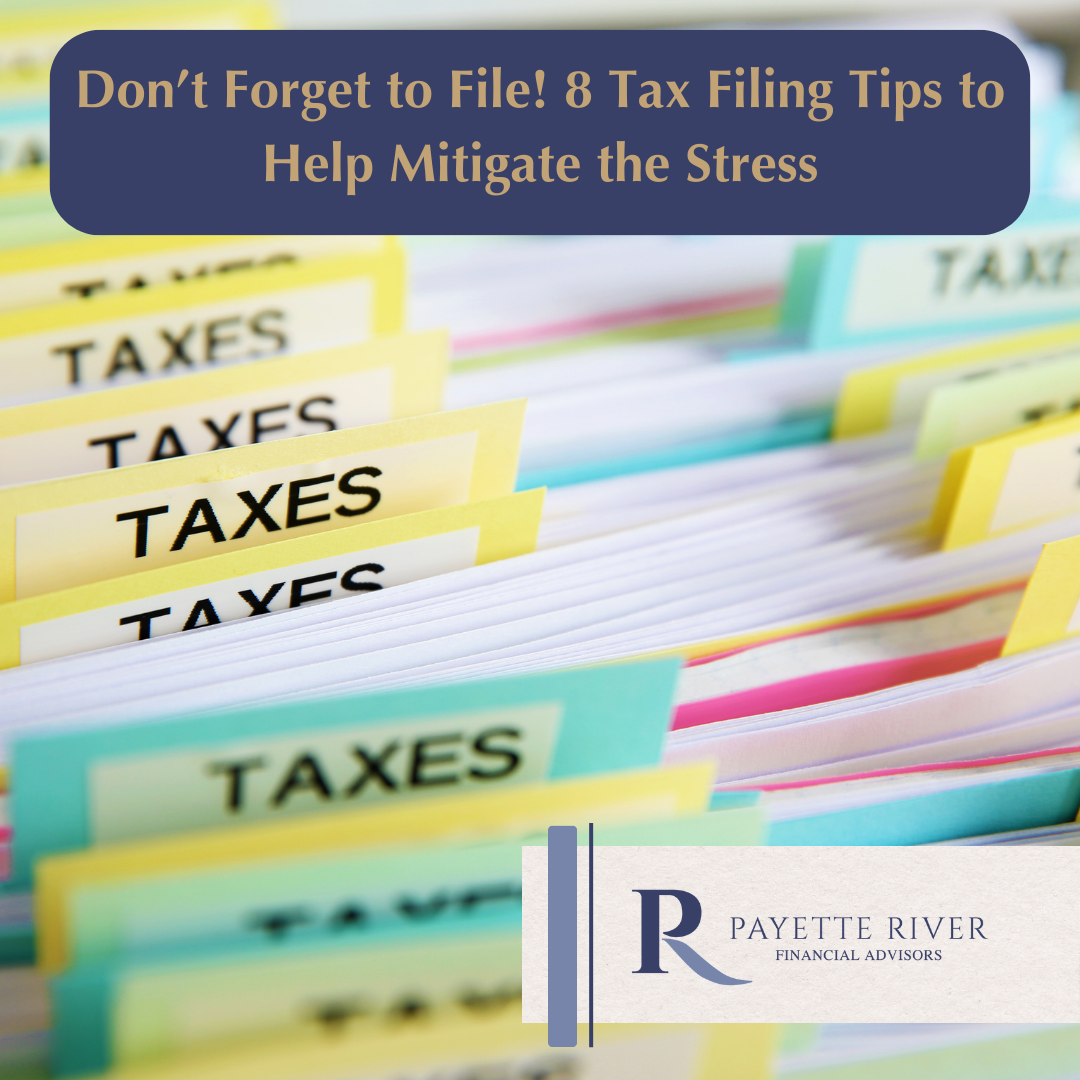If you hear the term HENRYs mentioned during a financial conversation, you may or may not be familiar with the fairly new acronym. It stands for “High Earners, Not Yet Rich,” or another way to describe them is “high earners with little to no savings,” or the “working rich.” If individuals that are big spenders and not in the habit of saving much yet, they may find a way to mitigate some of their financial stress through modifying their tax filing strategy.
Tax filing can be stressful because of its complexities and the financial responsibility of owing taxes without having an emergency fund, or money put aside for this occasion. We wanted to share eight tips that may help you mitigate some of the stress from filing your taxes.
1. Don’t file late
If you don’t file on time or request an extension by April 15, 2024, you could be subject to a penalty. The punishment is typically five percent of the tax owed for a part of or the entirety of each month that your return is late, up to 25% of the taxes owed. If you are 60 days late, there is also a minimum late filing penalty, which is the lesser of $85 (for returns filed in 2024) or 100 percent of the tax owed.
2. Take advantage of tax credits and deductions
There are a slew of tax deductions and credits that you may be eligible for, and understanding how your financial tax decisions might impact your financial strategy and goals can become complex. A financial professional can help you evaluate what is available and the implications of taking the deductions and credits.
- Tax credits lower the total income tax you owe. A hypothetical example would be if you owed $8,000 in income taxes and received a $1,000 tax credit. The new amount you would owe would be $7,000.
- Tax deductions lower the total income your taxes are calculated from. For example, if you have $40,000 taxable income and take a $2,000 deduction, your new taxable income would be $38,000.
3. Increase contributions to your retirement accounts
You use pre-tax dollars when contributing to a traditional IRA, 401(k), or 403(b). The benefit is the tax savings by lowering your taxable income, so you pay less taxes now. To put it into context, consider this hypothetical. You earn $60,000 annually and contribute 6% to your tax-deferred 401(k). 6% of $60,000 is $3,600. Therefore, you lower your taxable income to $56,400. For some taxpayers, this change may even lower their tax bracket.
4. Maximize your 529 plan contributions
If you have children, establishing a 529 plan and making regular contributions will minimize your tax burden. The contributions grow tax-free and can be used for various educational pursuits, including private, public, and religious kindergarten education through 12th grade and for college expenses. Contributions to a 529 plan are after-tax and not federally tax deductible.
5. Consider contributing to a health savings account (HSA)
You may access an HSA if you have a high deductible health plan (HDHP) through your employer. The tax benefits include pre-tax HSA deductions, tax-free growth, and qualified medical expenses aren’t taxed.
6. Donating more than just money
People are familiar with donating money as a tax planning strategy. However, you can also donate other items of value, for example, real estate, stock, clothes, and even airline miles. The Internal Revenue Service (IRS) requires that all charitable donations be valued and itemized. Determining the value is based on approximation and if the items are considered in “good” condition.
7. Manage your paycheck withholding
Depending on how you determine the amount withheld from your paycheck, you could play a roll in how much tax you will owe. However, it is important to consider that too little tax withheld from your paycheck could subject you to a penalty.
8. Consult a financial professional
Tax filing, especially as your income increases, can become more complex. More effort may be made to uncover credits, deductions, and other tax-advantaged strategies to manage and reduce your tax burden and mitigate some of the stress of filing your return.
Important Disclosures:
The opinions voiced in this material are for general information only and are not intended to provide specific advice or recommendations for any individual.
Prior to investing in a 529 Plan investors should consider whether the investor’s or designated beneficiary’s home state offers any state tax or other state benefits such as financial aid, scholarship funds, and protection from creditors that are only available for investments in such state’s qualified tuition program. Withdrawals used for qualified expenses are federally tax free. Tax treatment at the
state level may vary. Please consult with your tax advisor before investing. Non-qualified withdrawals may result in federal income tax and a 10% federal tax penalty on earnings.
This information is not intended to be a substitute for specific individualized tax advice. We suggest that you discuss your specific tax issues with a qualified tax advisor.
All information is believed to be from reliable sources; however, LPL Financial makes no representation as to its completeness or accuracy.
Sources: Topic no. 653, IRS notices and bills, penalties, and interest charges | Internal Revenue Service The Tax Benefits of Your 401(k) Plan – TurboTax Tax Tips & Videos (intuit.com) 5 Tax Strategies for High Net Worth Individuals | MB Group LLC (mbgcpa.com) 8 ways you can save on taxes in 2024 | Principal Goodwill Tax Deduction – Donation Tax Write Off’s (ccgoodwill.org) Media Relations Office (irs.gov)
This article was prepared by LPL Marketing Solutions
LPL Tracking # 539126


